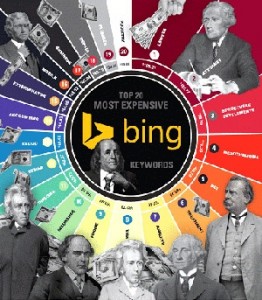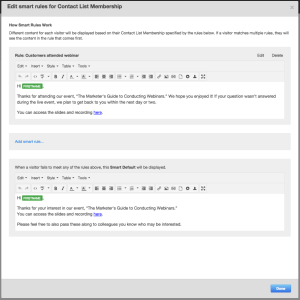Uncover the impact of dynamic pricing on modern commerce and how to adopt it while ensuring fair practices and customer loyalty.

Dynamic pricing, once a standard practice in ancient marketplaces, is making a comeback in today’s digital age. This pricing strategy, which involves adjusting prices based on various factors such as demand, time and customer behavior, has evolved from its roots in the airline and ride-sharing industries and has become a consideration across diverse sectors, including fast food and retail.
As technology advances and consumer behavior shifts, businesses are increasingly exploring dynamic pricing to optimize their operations and improve profitability. However, this trend raises important questions about consumer perception, fairness and the balance between maximizing revenue and maintaining customer trust. Here’s how you can adopt dynamic pricing in a way that aligns with your organization’s goals and values while addressing consumer concerns.
Dynamic pricing: From ancient markets to digital shelves
Before the advent of standardized pricing and price tags on shelves, customers typically bartered and haggled to secure the best product deal. As far back as 500 B.C., ancient Romans gathered at auctions to buy and sell goods. Since then, the Industrial Revolution and the emergence of department stores paved the way for standardized pricing, streamlining the shopping experience for both customers and retailers alike. Customers enjoyed the ability to easily compare prices, while retailers could process transactions more efficiently without prolonged negotiations.
In the “what’s old is new again” category, dynamic pricing is regaining popularity, driven by technological advancements, changes in consumer behavior and evolving market dynamics. The explosion of big data, advanced analytics, artificial intelligence, machine learning and online retail platforms has made it easier to adjust prices dynamically based on varying conditions.
Dynamic pricing, popularized by airlines and ride-sharing companies, is familiar to many, but consumer opinions are still mixed. On the positive side, consumers appreciate the opportunity to secure better deals through dynamic pricing, benefiting from discounts and lower prices during off-peak or low-demand periods. Additionally, the personalized nature of dynamic pricing can enhance satisfaction among those receiving tailored offers.
Conversely, many consumers view dynamic pricing as unfair, particularly if they perceive they are being charged more than others for the same product. Transparency issues aggravate these concerns, as consumers fear arbitrary price changes or potential price gouging during emergencies or high-demand events.
What’s a brand to do? Businesses adopting dynamic pricing must carefully balance consumer sentiment with the goal of improving margins and ensuring fair practices to maintain trust and satisfaction.
Highlights on dynamic pricing: The past, present and future
The past
Airlines have long adjusted prices based on seasonality, demand fluctuations and other factors, conditioning consumers to compare prices and adjust their purchasing behaviors to secure the best deal.
Similarly, ride-sharing companies vary prices based on demand, traffic conditions and driver availability. During peak times, comparing Uber surge pricing to Lyft often leads to opting for the lower-cost option or alternative transportation methods.
The present
In Q1 2024, Wendy’s announced dynamic pricing during an earnings call, initially sparking consumer concern about surge pricing during peak hours. After much back and forth, Wendy’s clarified their intention to lower prices during low-demand periods rather than engaging in surge pricing. The spillover of dynamic pricing from airlines and ride-sharing into fast food emphasizes both the growing move toward digital pricing and the need to address consumer fears.
The future
Fast forward to Q2 2024 and digital shelving is promising to revolutionize dynamic pricing in retail. Digital shelving is expected to reduce labor costs associated with manual price changes and logistical challenges. Led by Walmart’s move to implement digital shelf labels in 2,300 stores by 2026, consumers are getting ready for the change.
Similar to Wendy’s, there are consumer murmurings over surge pricing, but this hasn’t derailed Walmart’s plans just yet. Walmart’s positioning for dynamic pricing is to enhance customer experience while driving operational efficiency. Time will tell if Walmart can balance this equation. How should a brand considering dynamic pricing move forward?
Best practices for dynamic pricing
In an ideal world, dynamic pricing wouldn’t alienate customers. To strike the right balance, brands can:
- Be transparent about dynamic pricing usage: If a brand commits to no surge pricing, it must use proper monitoring to ensure compliance.
- Choose an appropriate dynamic pricing strategy: Select a dynamic pricing strategy that aligns with business objectives and customer needs. Some strategies include:
- Time-based pricing: Adjusting prices based on specific time frames, such as offering discounts during shoulder season travel.
- Peak pricing: Targeting high-demand periods with increased prices within reasonable limits.
- Segmented pricing: Offering different prices to different customer segments, like loyal customer discounts or frequent purchaser discounts.
- Penetration pricing: Setting an initially low price to attract customers, then increasing it within reason.
- Competitor-based pricing: Adjusting prices based on competitors’ prices.
- Behavior-based pricing: Tailoring prices based on individual customer behavior.
- Bundle pricing: Offering sets of products/services at a reduced price.
- Comply with legal and ethical standards: Ensure the dynamic pricing strategy adheres to legal regulations and ethical considerations. For instance, a pharmacy employing dynamic pricing must comply with regulations regarding the pricing of essential medications. Ethically, Walmart’s mission is to help people live better by saving money, building communities and creating opportunities, so using digital shelf labels for price gouging would conflict with their brand values.
- Determine pricing boundaries: Set minimum and maximum price limits to ensure profitability and maintain customer trust. For example, a luxury brand may set a floor price to protect brand value while using dynamic pricing to offer exclusive discounts to loyal customers. Avoid scenarios like Ticketmaster’s Taylor Swift ticket pricing debacle, where prices ranged from $ 400 to $ 22,000.
Dynamic pricing reshapes consumer markets, spanning airlines, ride-sharing, fast food and retail. As this trend expands, businesses must balance profitability with customer satisfaction through transparency and ethical pricing practices.
Thoughtful implementation of dynamic pricing strategies fosters increased efficiency and competitiveness while preserving customer loyalty. The future holds broader adoption of these strategies, rewarding brands prioritizing transparency and ethical conduct with sustained consumer trust and market success.
The post How to implement dynamic pricing without alienating customers appeared first on MarTech.
(6)
Report Post






